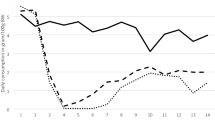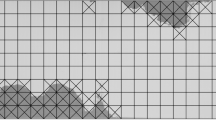Abstract
Nowadays, the use of natural and eco-friendly compounds for control of synanthropic rodents instead of chemical rodenticides is an important step in integrated pest management (IPM). Three by-products, namely corn cobs, rice straw and sugarcane bagasse, consisting of cellulose as the main active ingredient, were investigated to combat the Norway rat (Rattus norvegicus) under laboratory conditions. Different baits: five from corn cobs; two from rice straw; and two from sugarcane bagasse; were explored. A series of bioassay detection methods of no-choice and choice feeding trials were used. For the no-choice feeding test, all the five tested corn cob baits, together with one of each of the rice straw and sugarcane bagasse gave 100% mortality. However, in the choice feeding test, only the 65% corn cob wood fraction bait (65% CCW) exhibited 100% mortality with 16.37% acceptance. The changes related to ingestion of cellulose-based baits were mainly due to the dehydration, which was confirmed by a significant reduction in body weight, lethargy, tremors and intensive bowel impaction. Although 65% CCW caused 100% mortality, its acceptance is still below the level for a rodenticide material to be approved. Hence, further efficacy studies are required, targeting amelioration of attractiveness of cellulose-based baits for rodents and development of palatable products to ensure better outcomes.






Similar content being viewed by others
References
Heuser E, Fischer S, Ryll R, Mayer-Scholl A, Hoffmann D, Spahr C et al (2017) Survey for zoonotic pathogens in Norway rat populations from Europe. Pest Manag Sci 73(2):341–348. https://doi.org/10.1002/ps.4339
Neena S, Babbar B (2010) Rodent damage and infestation in wheat and rice crop fields: district wise analysis in Punjab State. Ind J Ecol 37(2):184–188
Samir A, Soliman R, El-Hariri M, Abdel-Moein K, Hatem ME (2015) Leptospirosis in animals and human contacts in Egypt: broad range surveillance. Rev Soc Bras Med Trop 48(3):272–277. https://doi.org/10.1590/0037-8682-0102-2015
Meerburg BG, Singleton GR, Kijlstra A (2009) Rodent-borne diseases and their risks for public health. Crit Rev Microbiol 35(3):221–270. https://doi.org/10.1080/10408410902989837
Maudlin I, Eisler MC, Welburn SC (2009) Neglected and endemic zoonoses. Philos Trans R Soc Lond B Biol Sci 364(1530):2777–2787. https://doi.org/10.1098/rstb.2009.0067
Shore R, Birks J, Afsar A, Wienburg C, Kitchener A (2003) Spatial and temporal analysis of second-generation anticoagulant rodenticide residues in polecats (Mustela putorius) from throughout their range in Britain, 1992–1999. Environ Pollut 122(2):183–193. https://doi.org/10.1016/S0269-7491(02)00297-X
Runge M, von Keyserlingk M, Braune S, Becker D, Plenge-Bönig A, Freise JF et al (2013) Distribution of rodenticide resistance and zoonotic pathogens in Norway rats in Lower Saxony and Hamburg, Germany. Pest Manag Sci 69(3):403–408. https://doi.org/10.1002/ps.3369
Sud D, Mahajan G, Kaur M (2008) Agricultural waste material as potential adsorbent for sequestering heavy metal ions from aqueous solutions: a review. Bioresour Technol 99(14):6017–6027. https://doi.org/10.1016/j.biortech.2007.11.064
Lim S-F, Matu SU (2015) Utilization of agro-wastes to produce biofertilizer. Int J Energy Environ Eng 6(1):31–35. https://doi.org/10.1007/s40095-014-0147-8
Jokić G, Vukša M, Đedović S, Kljajić P (2014) Laboratory testing of wood mouse and common vole sensitivity to bromadiolone, sodium selenite, and cellulose. J Pest Sci 87(2):309–314. https://doi.org/10.1007/s10340-014-0554-x
Hanney PW (1975) Rodents, their lives and habits. Taplinger Pubishing Co., New York
Schuerch C (1968) Methods of wood chemistry. vol. II. BL Browning, Ed., Wiley, New York, 1967. 498 pp. $18.75. J Polym Sci A 6(11):1943–1944. https://doi.org/10.1002/pol.1968.160061112
TAPPI. (1999) TAPPI test methods. T203 Cm-99. Alpha-, beta-and gamma-cellulose in pulp: Technical Association of Pulp Paper Industry
Kumar AK, Sharma S (2017) Recent updates on different methods of pretreatment of lignocellulosic feedstocks: a review. Bioresour Bioprocess 4(1):7. https://doi.org/10.1186/s40643-017-0137-9
Johnson RA, Prescott C (1994) The laboratory evaluation of rodenticides. In: Buckle AP, Smith RH (eds) CPI Group (UK) Ltd, Croydon, CRo 4YY
WHO (1982) WHO vector biology and control series, vol 843. World Health Organization: Instructions for determining the susceptibility or resistance of rodents to anticoagulant rodenticide, p 9
OEPP/EPPO (2004) Laboratory tests for evaluation of the toxicity and acceptability of rodenticides and rodenticide preparations, PP 1/113 (2). In: EPPO Standards PP1. Efficacy evaluation of plant protection products miscellaneous, vol 5, 2nd edn. European and Mediterranean Plant Protection Organization, Paris, pp 23–35
Sokal RR (1995) The principles and practice of statistics in biological research. Biometry, 3rd edn. W.H. Freeman, New York, pp 451–554
Guidobono JS, León V, Gómez Villafañe IE, Busch M (2010) Bromadiolone susceptibility in wild and laboratory Mus musculus L. (house mice) in Buenos Aires, Argentina. Pest Manag Sci 66(2):162–167. https://doi.org/10.1002/ps.1850
Dawson A, Garthwaite D (2004) Pesticide usage survey report 185: rodenticide usage by local authorities in Great Britain 2001. DEFRA, London
Anonymous (2007) Registration decision-RD2007-08: cellulose from powdered corn cobs. In: Canada PMRA, editor
Jokić G, Vukša P, Vukša M (2010) Comparative efficacy of conventional and new rodenticides against Microtus arvalis (Pallas, 1778) in wheat and alfalfa crops. Crop Prot 29(5):487–491. https://doi.org/10.1016/j.cropro.2009.11.011
Ashour A, Amer M, Marzouk A, Shimizu K, Kondo R, El-Sharkawy S (2013) Corncobs as a potential source of functional chemicals. Molecules 18(11):13823–13830. https://doi.org/10.3390/molecules181113823
Barl B, Biliaderis CG, Murray ED, Macgregor AW (1991) Combined chemical and enzymic treatments of corn husk lignocellulosics. J Sci Food Agric 56(2):195–214. https://doi.org/10.1002/jsfa.2740560209
Matsushima J, Dowe TW, Arthaud VH (1957) Evaluation of ground corncobs and corncob components as nutritive materials in rations for beef cattle. Hist Res Bull Neb Agric Exp 185:1–19
Guilherme A, Dantas P, Santos E, Fernandes F, Macedo G (2015) Evaluation of composition, characterization and enzymatic hydrolysis of pretreated sugar cane bagasse. Braz J Chem Eng 32(1):23–33. https://doi.org/10.1590/0104-6632.20150321s00003146
El-Tayeb T, Abdelhafez A, Ali S, Ramadan E (2012) Effect of acid hydrolysis and fungal biotreatment on agro-industrial wastes for obtainment of free sugars for bioethanol production. Braz J Microbiol 43(4):1523–1535. https://doi.org/10.1590/S1517-83822012000400037
Schmolz E (2010) Efficacy of anticoagulant-free alternative bait products against house mice (Mus musculus) and brown rats (Rattus norvegicus). Integr Zool 5(1):44–52. https://doi.org/10.1111/j.1749-4877.2010.00191.x
Salmon TP, Dochtermann NA (2006) Rodenticide grain bait ingredient acceptance by Norway rats (Rattus norvegicus), California ground squirrels (Spermophilus beecheyi) and pocket gophers (Thomomys bottae). Pest Manag Sci 62(7):678–683. https://doi.org/10.1002/ps.1224
Miller JG (1974) The significance of preference in laboratory bait acceptance studies. In: Proceedings of the vertebrate pest conference, vol 6, issue 6, pp 78–81
Acknowledgements
Many thanks to Dr. Sawsan Dakrory, National Research Center, Egypt.
Author information
Authors and Affiliations
Corresponding author
Ethics declarations
Conflict of interest
The authors declare that they have no conflicts of interest.
Additional information
Publisher's Note
Springer Nature remains neutral with regard to jurisdictional claims in published maps and institutional affiliations.
Significance Statement An evidence for the potential activity of three cellulose-based agro-waste by-products as rodenticides through a series of bioassay methods of choice and no-choice feeding tests to combat the wild Norway rat under laboratory conditions is provided.
Supplementary Information
Below is the link to the electronic supplementary material.
Rights and permissions
About this article
Cite this article
Issa, M.Y., Nasser, W.S., Mikhail, M.W. et al. Comparative Rodenticide Activity of Three Agro Waste Materials in Combat of Rattus norvegicus Under Laboratory Conditions. Proc. Natl. Acad. Sci., India, Sect. B Biol. Sci. 91, 855–863 (2021). https://doi.org/10.1007/s40011-021-01271-w
Received:
Revised:
Accepted:
Published:
Issue Date:
DOI: https://doi.org/10.1007/s40011-021-01271-w




